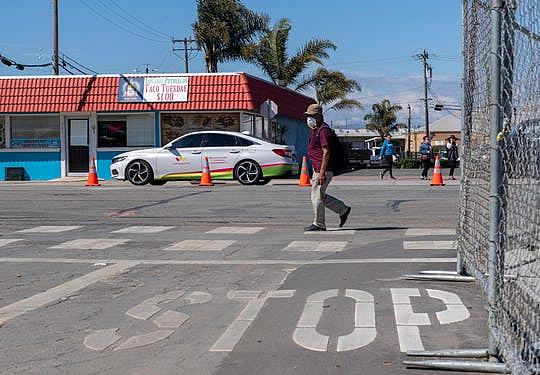Sixth person dies from COVID-19, Alisal and North Salinas hardest-hit in county
This story was produced as a project for the 2020 California Fellowship.
Other stories in this series include:
Ag workers exempted from COVID-19 shelter in place mandate, advocates fear for health
Protected in the fields but not at home: Salinas H-2A farmworkers at risk
‘The perfect storm of vulnerability’: Protection in the fields doesn’t follow farmworkers home
Trump plans to halt immigration, California growers aren't thrilled
Monterey County ag workers comprise nearly a quarter of county COVID-19 diagnoses
Monterey County growers face 'unprecedented losses' amid pandemic
Close quarters: Overcrowding fuels spread of COVID-19 among essential and service workers
Evicted Monterey County renters face greater risk of contracting COVID-19
Do California ag counties hold solutions to Monterey County farmworker housing crisis?
Monterey County advocates, growers urge renewed focus on farmworker housing
Housing bills aim to extend tenant, landlord protections for Californians amid pandemic

(Photo: David Rodriguez/The Salinas Californian)
The poorest, most congested ZIP code in Salinas are being hit the hardest by the coronavirus, according to data released Monday.
Thus far, six people have died from the virus in the county. A total of 235 people have been stricken.
ZIP codes 93905 and 93906 encompass the east and north sides of Salinas, and are home to 122 people who have tested positive for COVID-19 in Monterey County.
More than half the people sickened with COVID-19 come from these two ZIP codes combined. By contrast, the only two Peninsula ZIP codes made public in the county data (93955 in Seaside and 93940 in Monterey, Big Sur and Del Rey Oaks) combine for a total of 23 cases.
One hundred and fifty-five people diagnosed with COVID-19 are Hispanic or Latino, accounting for 66% of patients, according to Monterey County data. Men make up the bare majority of cases, at 51% of patients.
The Alisal area, represented by the 93905 ZIP code, has the highest concentration of coronavirus patients within the county. Here, 64 people have tested positive for the virus.
The Alisal is historically home to farmworkers: first "Okies" who landed there after the Dust Bowl, and is now a predominantly Mexican and Mexican-American community.
U.S. Census estimates from 2018 place 156,000 people within the borders of Salinas, a city that is 80% Latino. According to the 2018 Salinas and Pajaro Valley Farmworker Housing Study, 90,000 farmworkers live in and around the area, often doubled or tripled up in apartments or houses.
[This article was originally published by The Californian.]

